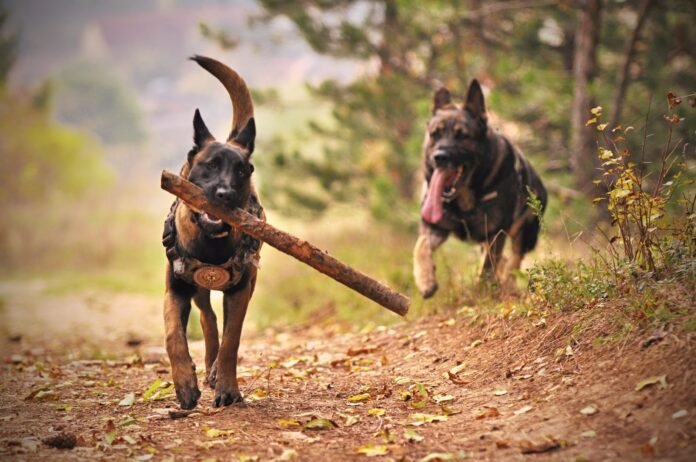The extraordinary diversity we observe among dog breeds today is a testament to human ingenuity and our enduring relationship with these remarkable animals. From assisting in hunting and herding to providing companionship, dogs have been at our side, fulfilling various roles for thousands of years.
Let’s take a journey back through time, tracing the origins and evolution of five of the world’s most popular dog breeds, revealing what they were initially bred for and how they have evolved over time.
History and Evolution of 5 Popular Dog Breeds
Table of Contents
Labrador Retrievers
The Labrador Retriever, often simply referred to as a “Lab,” ranks consistently as one of the most popular dog breeds. However, their origins can be traced back to the early 19th century in Newfoundland, Canada. The breed’s ancestors were known as “St. John’s water dogs” or “Lesser Newfoundland Dogs,” bred by local fishermen to retrieve fishing nets and catch escaping fish.
These dogs were exceptionally skilled swimmers, a trait preserved in modern Labradors. They were also known for their intelligence, strength, and friendly temperament. In the early 19th century, English nobles visiting Canada noted these dogs’ abilities and imported some of them to England. Here, they were further refined into the breed we recognize today as the Labrador Retriever.
Originally used as working dogs and companions for hunters and fishermen, Labs have now become beloved pets worldwide, valued for their intelligence, trainability, and affectionate nature.
German Shepherds
As the name suggests, the German Shepherd’s roots lie in Germany. Developed in the late 19th century by a former cavalryman and veterinarian, Captain Max von Stephanitz, the breed was designed to be the ideal herding dog. Stephanitz sought a dog that was intelligent, strong, and had a keen sense of duty, leading to the creation of the German Shepherd.
After World War I, the breed’s popularity spread to other parts of the world, notably the United States and Britain. The German Shepherd’s roles have evolved considerably over time; from a herding dog, they have become police dogs, guide dogs, search and rescue dogs, and household pets. They are admired for their intelligence, loyalty, and versatility.
Poodles
The Poodle, with its distinctive curly coat and often flamboyant grooming, has a rich history. Despite its association with French culture, the breed’s origins are believed to be in Germany, where they were known as “Pudel,” meaning “to splash in water.” The breed was developed as a water retriever, with their unique coats designed to protect vital organs from cold waters.
Over time, Poodles found their way into French society, where their intelligence and good nature made them popular among nobles. The French bred smaller versions of the breed, leading to the Miniature and Toy Poodle varieties. While the Poodle’s role as a working dog has largely diminished, they remain popular pets and show dogs due to their intelligence, friendly nature, and hypoallergenic coats.
Beagles
Known for their exceptional sense of smell and tracking abilities, Beagles are thought to have descended from ancient scent hounds in England. Their history dates back to Roman times, but the breed as we know it today was developed in the 18th century. They were primarily used for hunting small game, particularly rabbits, due to their keen noses and stamina.
Despite their working origins, Beagles have transitioned into popular family pets, prized for their friendly, outgoing nature. However, their superior scenting abilities are still used in roles such as detection dogs at airports and border crossings.
Dachshunds
The Dachshund, often affectionately known as the “sausage dog” due to its distinctive long body and short legs, was originally bred in Germany for hunting badgers. Their unique physique was designed to allow them to dig into badger dens and confront their prey. The breed’s name, in fact, translates to “badger dog” in German.
Over time, Dachshunds have been bred in different sizes to hunt different kinds of prey, leading to the creation of the Miniature Dachshund. Today, while they’re not typically used for hunting badgers anymore, Dachshunds are beloved pets, known for their playful and sometimes stubborn nature.
Conclusion
From retrieving nets in the frigid waters of Newfoundland to digging into badger dens in Germany, dogs have been selectively bred for centuries to assist us in various ways. As society has evolved, so too have the roles of these breeds.
Today, many of them primarily serve as loving companions, offering us loyalty, affection, and unwavering friendship. If you’re looking for a puppy in Sydney to serve as your best bud for life, knowing the histories of these breeds help underline the fascinating journey of human-canine partnership, a bond that continues to evolve and deepen with every passing year.








